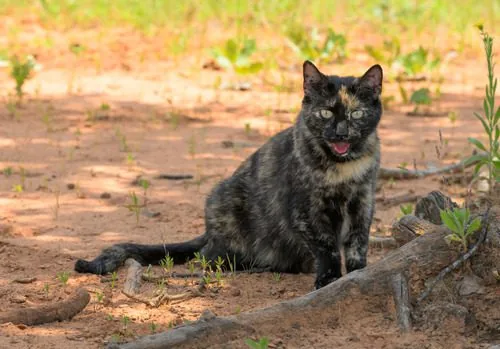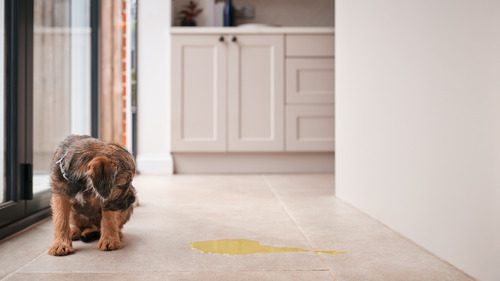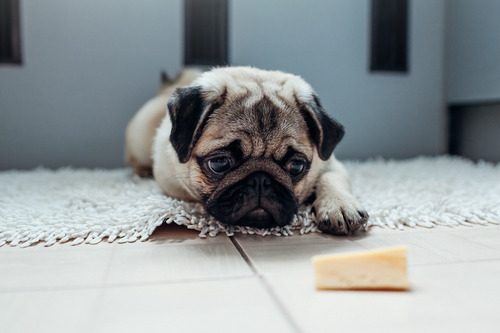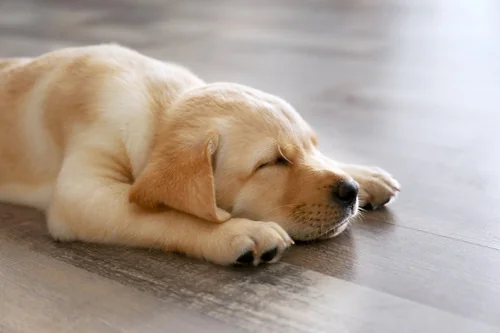10 Essential Tips to Prevent Cat Heatstroke
Cat heatstroke is a serious and often overlooked condition that can quickly become life-threatening if not addressed promptly. As temperatures rise, it’s important for cat owners to be aware of how to keep their feline friends safe from the dangers of overheating. At Mendocino Animal Hospital in Ukiah, CA, we are dedicated to helping you protect your cat from heatstroke. Here are ten essential tips to prevent cat heatstroke, ensuring your cat stays cool and healthy. For more information or to schedule an appointment, call us at (707) 462-8833 or book an appointment online.

Provide Ample Shade and Ventilation
Ensuring your cat has access to shaded areas and well-ventilated spaces is crucial in preventing heatstroke. When the sun is at its peak, direct sunlight can quickly elevate a cat’s body temperature. Create a comfortable, shaded environment for your cat both indoors and outdoors. If your cat spends time outside, ensure they have access to shaded spots under trees, patios, or specially designed cat shelters. Indoors, keep curtains drawn and use fans or air conditioning to maintain a cool environment.
Keep Your Cat Hydrated
Proper hydration is essential in preventing cat heatstroke. Ensure your cat has constant access to fresh, clean water. Place multiple water bowls around your home to encourage frequent drinking. Consider adding ice cubes to their water bowl on particularly hot days to keep the water cool. Additionally, wet cat food can help increase their water intake. If your cat seems disinterested in drinking water, try using a pet water fountain, which can make drinking more appealing by keeping the water fresh and moving.
Monitor Water Intake
Keep an eye on your cat’s water intake, especially during hot weather. If you notice a decrease in their drinking habits, it may be a sign of dehydration. Contact Mendocino Animal Hospital if you have concerns about your cat’s hydration levels.
Limit Outdoor Time During Peak Heat
Avoid letting your cat outside during the hottest parts of the day, typically between 10 a.m. and 4 p.m. During these hours, the risk of heatstroke is highest due to the intense heat. Instead, allow outdoor time in the early morning or late evening when temperatures are cooler. If your cat enjoys sunbathing, make sure they have access to shaded areas and always supervise their outdoor activities.
Create a Cool Indoor Environment
Maintaining a cool indoor environment is vital in preventing cat heatstroke. Use fans, air conditioning, or open windows (with screens) to allow a breeze to circulate through your home. You can also provide cool surfaces for your cat to lie on, such as tile floors or cooling mats specifically designed for pets. These mats can be refrigerated or frozen before use to provide additional cooling relief.
Avoid Excessive Exercise
While regular playtime is important for your cat’s health, avoid excessive exercise during hot weather. Overexertion can quickly lead to overheating and increase the risk of heatstroke. Opt for low-energy activities and keep play sessions short. Interactive toys and puzzle feeders can provide mental stimulation without causing physical strain. Always monitor your cat’s behavior and stop any activity if they show signs of overheating.
Use Cooling Products
There are various cooling products available that can help prevent cat heatstroke. Cooling collars, vests, and mats can provide relief from the heat. These products are designed to keep your cat’s body temperature down and are especially useful for cats with thick fur or those prone to overheating. When using cooling products, ensure they fit properly and do not restrict your cat’s movement or breathing.
Recognize the Signs of Heatstroke
Understanding the signs of cat heatstroke can help you take swift action if your cat becomes overheated. Common symptoms include:
- Excessive panting
- Drooling
- Lethargy
- Vomiting
- Difficulty breathing
If you notice any of these signs, move your cat to a cool area immediately and offer water. Contact Mendocino Animal Hospital at (707) 462-8833 for further guidance and to seek immediate veterinary care.
Immediate Actions to Take
If you suspect your cat is suffering from heatstroke, take the following steps while seeking veterinary assistance:
- Move your cat to a shaded or air-conditioned area.
- Offer small amounts of cool water.
- Use a damp cloth to gently cool their body, focusing on their head, neck, and paws.
- Avoid using ice-cold water, as it can cause shock.
Plan Ahead for Emergencies
Having a plan in place for emergencies can make a significant difference in preventing cat heatstroke. Know the location of the nearest emergency veterinary clinic and have their contact information readily available. Keep a pet first-aid kit that includes items like a thermometer, cool packs, and emergency contact numbers. Educate yourself and other household members on the signs of heatstroke and the steps to take if an emergency arises.
Emergency Contact Information
Make sure you have Mendocino Animal Hospital’s contact information saved in an easily accessible location:
- Phone: (707) 462-8833
- Online Appointment Booking: Book an appointment online!
Monitor Your Cat’s Behavior
Regularly monitoring your cat’s behavior can help you detect early signs of heat-related stress. Watch for changes in their activity levels, eating habits, and general demeanor. Cats often seek cooler areas when they are too warm, so pay attention to where your cat chooses to rest. If you notice any unusual behavior, it may be an indication that your cat is struggling with the heat. Contact Mendocino Animal Hospital for advice and support.
Behavioral Changes to Watch For
- Decreased appetite
- Increased lethargy
- Seeking cooler or shaded areas
- Excessive grooming, especially of their paws
Stay Prepared for Heatwaves
Heatwaves can pose a significant risk to your cat’s health. Stay informed about weather forecasts and be proactive in protecting your cat during extreme heat. Ensure your home remains cool, and limit your cat’s outdoor exposure. Stock up on cooling products and keep your emergency plan ready. By staying prepared, you can minimize the risk of cat heatstroke and ensure your cat remains safe and comfortable.
Tips for Heatwave Preparedness
- Monitor weather forecasts regularly.
- Ensure your home has adequate cooling.
- Limit outdoor activities during extreme heat.
Help Your Cat Stay Cool and Safe
Preventing cat heatstroke requires vigilance, preparation, and understanding of your cat’s needs. By providing ample shade, keeping your cat hydrated, limiting outdoor time during peak heat, creating a cool indoor environment, avoiding excessive exercise, using cooling products, recognizing the signs of heatstroke, planning for emergencies, monitoring behavior, and staying prepared for heatwaves, you can help your cat stay cool and safe. For more information or to book an appointment, call Mendocino Animal Hospital at (707) 462-8833 or book an appointment online. Your cat’s health and well-being are our priority, and we are here to support you in providing the best care for your feline friend.
Recent Posts
Dog UTI Symptoms
Urinary tract infections (UTIs) can affect dogs of any age, breed, or size—and when they do, it…
Ear Mites in Cats
If your cat has been shaking their head, scratching around their ears, or showing signs of discomfort,…
Can Dogs Have Cheese?
Many pet owners enjoy sharing small bites of their favorite snacks with their dogs—especially something as tempting…
What Do Dogs Dream About?
Have you ever watched your dog sleeping—legs twitching, nose wriggling, tail flicking—and wondered what’s going on in…
Is it Normal That My Dog is Snoring?
Dogs snoring can be adorable, but it can also raise concerns for pet owners. If you’re wondering,…
About Mendocino Animal Hospital
At Mendocino Animal Hospital, we believe in fostering the human-animal bond with excellent veterinary medicine. Our full-service veterinary practice operates in Ukiah, CA with a team of skilled veterinarians and a passionate, talented support staff who make you feel like a part of the family.
As an AAHA-accredited animal hospital, every service and aspect of our practice meets AAHA’s Standards of Excellence. No matter what your pet comes in for, they’ll receive only the best in care, compassion, and service.





